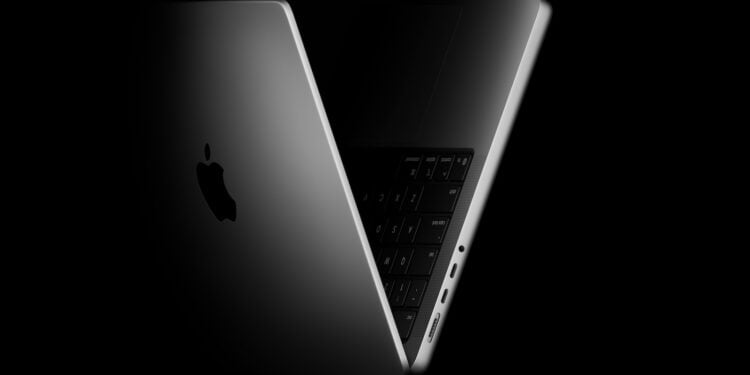Apple introduced three new devices with the M5 chip this week, including the new M5 MacBook Pro. At first glance, the update seems rather small, and indeed, there are few changes compared to last year's M4 MacBook Pro. Nevertheless, there are some technical differences that reveal Apple's priorities.
For years, the MacBook Pro has stood for performance, efficiency, and seamless integration of hardware and software. With each new chip, Apple promises more speed and improved energy efficiency. After the significant performance leap from the M3 to the M4 chip, the jump to the M5 is significantly smaller. Nevertheless, the new model brings noticeable improvements in processing power, memory bandwidth, and data transfer—areas that can be crucial for professional users.
The M5 chip – small steps in the CPU, big steps in the GPU
The most significant difference between the M5 MacBook Pro and the M4 MacBook Pro is, unsurprisingly, the chip itself. Both models feature a 10-core CPU, a 10-core GPU, and a 16-core Neural Engine. The basic architecture remains unchanged. Nevertheless, the new M5 chip delivers up to 20 percent faster multithreaded performance compared to the M4. This is especially evident in complex workflows such as code compilation, multitasking, or compute-intensive applications.
The advances in the GPU are even greater. Neural accelerators in each GPU core deliver significant performance improvements for AI-powered workloads. According to Apple, the M5 chip offers up to 3.5 times faster AI performance, up to 1.6 times faster graphics performance in professional applications, and up to 1.6 times higher frame rates in games.
The Neural Engine has also been redesigned, but its core structure remains unchanged. Apple doesn't provide specific figures, but speaks of overall faster processing of AI tasks. This puts the M5 MacBook Pro in the spotlight, especially for applications that utilize machine learning or image analysis processes.

More memory bandwidth – 153 GB/s instead of 120 GB/s
One improvement that isn't immediately noticeable but is noticeable in practice concerns memory bandwidth. The M5 MacBook Pro offers 153 GB/s, while the M4 model was at 120 GB/s. That's an increase of almost 30 percent.
This higher bandwidth enables faster data processing and smoother operation—especially with large files, when launching multiple applications, or when running large language models (LLMs) directly on the device. Apple describes the effect as follows: "Everything is accelerated—from app launch to running complex models."
Faster SSD – double the data transfer speed
In addition to the new chip, Apple has also been working on SSD technology. According to the manufacturer, the internal SSD in the M5 MacBook Pro is up to twice as fast as its predecessor.
This is noticeable when importing large RAW files, exporting videos, or opening large project files. This optimization should appeal especially to professional users who regularly work with data-intensive media projects. Apple has also increased the maximum storage capacity of the MacBook Pro.
New storage option: 4 TB
While the M4 MacBook Pro could be configured with a maximum of 2 TB, the M5 MacBook Pro now also offers a 4 TB option. This doubles the available storage space—a benefit for anyone who wants to store large video archives, AI models, or extensive media files locally.
The existing 512 GB, 1 TB, and 2 TB options remain. The 4 TB version is an addition and does not replace any existing configuration. However, the price is typical for Apple: the 4 TB version costs €1,250, which is €750 more than the 2 TB model.
No mandatory upgrade for M4 users
Compared to the other new M5 devices—such as the M5 iPad Pro or the Vision Pro with M5—the MacBook Pro receives the least update. Therefore, Apple is positioning the M5 MacBook Pro not as an upgrade for owners of the M4 version, but rather as an option for users of older devices.
Those still using a MacBook with an Intel, M1, M2, or M3 chip benefit from significantly improved performance, more efficient power management, and noticeably higher AI performance. For M4 owners, however, the performance gain remains manageable.
Why the M5 MacBook Pro is more of an upgrade for older devices
The M5 MacBook Pro isn't a major step forward, but rather a deliberate fine-tuning. Improvements in GPU performance, memory bandwidth, and SSD speed make the device more future-proof, especially for data- and AI-intensive tasks. However, for everyday use or simple creative work, the difference compared to the M4 is minimal. The new model demonstrates that Apple is continuing to optimize its Pro lineup without making radical changes. Anyone using an older MacBook will get a powerful, efficient, and technically sophisticated device with the M5 MacBook Pro. However, anyone already owning an M4 model can safely skip the upgrade. The best products for you: Our Amazon Storefront offers a wide selection of accessories, including accessories for HomeKit. (Image: Apple)
- Apple Vision Pro M5 at a glance: technology, design and price
- Apple M5 vs. M4: The most important innovations at a glance
- Apple hints at 120 Hz support for upcoming Studio Display
- M5 iPad Pro vs. M4 iPad Pro: All the differences in detail
- iPhone with eSIM: A small modification with a big impact
- iPhone 17 Pro stays cool: All about the new vapor chamber
- AirPods Pro 3 vs. AirPods Pro 1: What's really changed
- Apple Watch Ultra 3 vs. Apple Watch Ultra 2: The Differences
- iPhone 17: Why this model is so convincing
- iPhone Air or iPhone 17 Pro? All the differences compared
- iPhone 17 vs. iPhone 16: All the differences in detail
- iPhone 17 Pro vs. iPhone 17 Pro Max: Differences at a glance
- iPhone Air: Seven facts about the new ultra-thin smartphone
- AirPods Pro 3: Apple's headphones with 8 exciting upgrades
- AirPods Pro 3 vs. AirPods Pro 2: The big comparison in detail
- Is the iPhone 17 Pro not worth it? The iPhone 18 Pro in focus
- Apple Watch Ultra 3 vs. Ultra 2, Series 11: Battery comparison
- iPhone 17 Pro: Everything about the new camera platform & more





